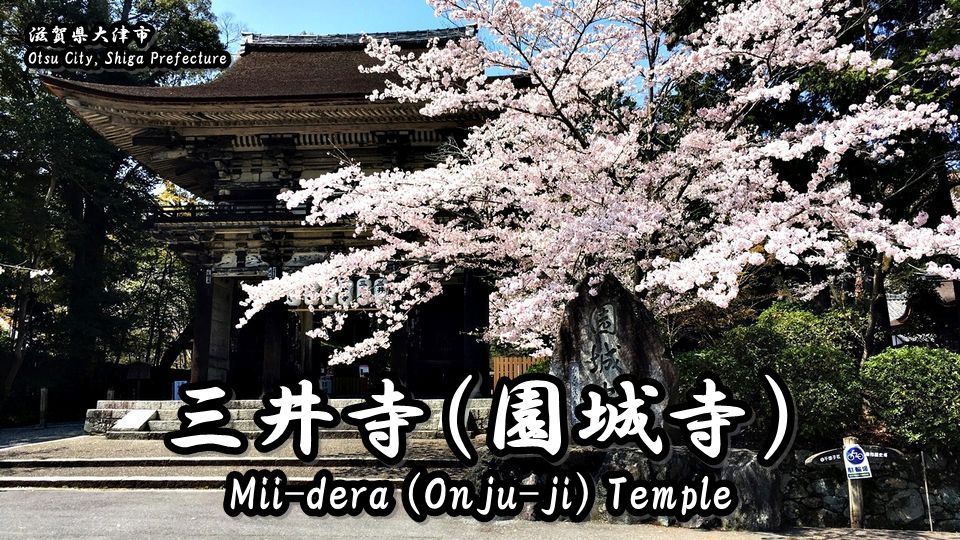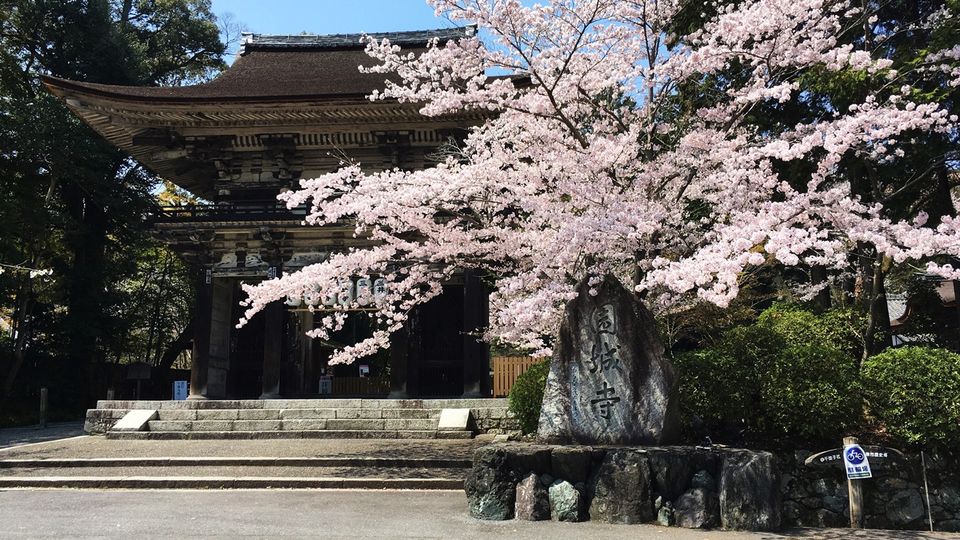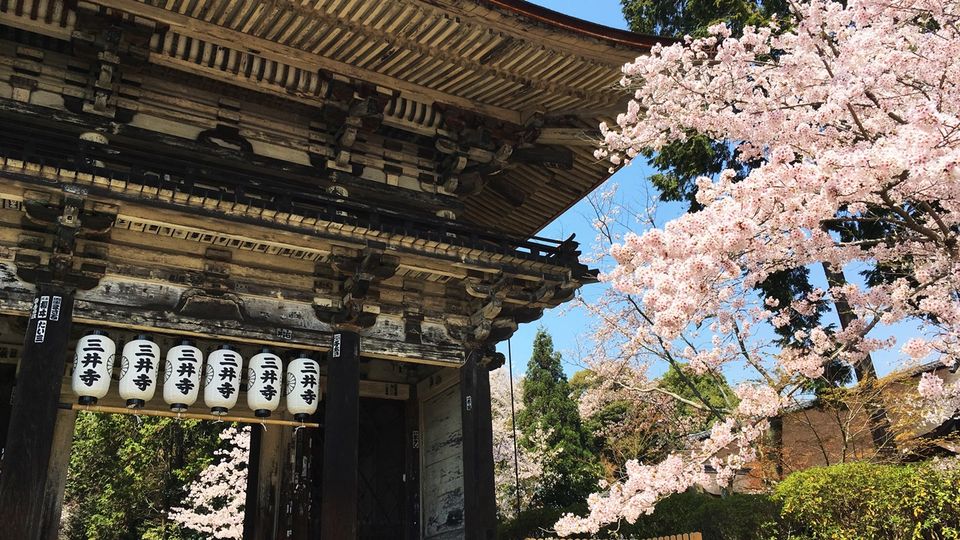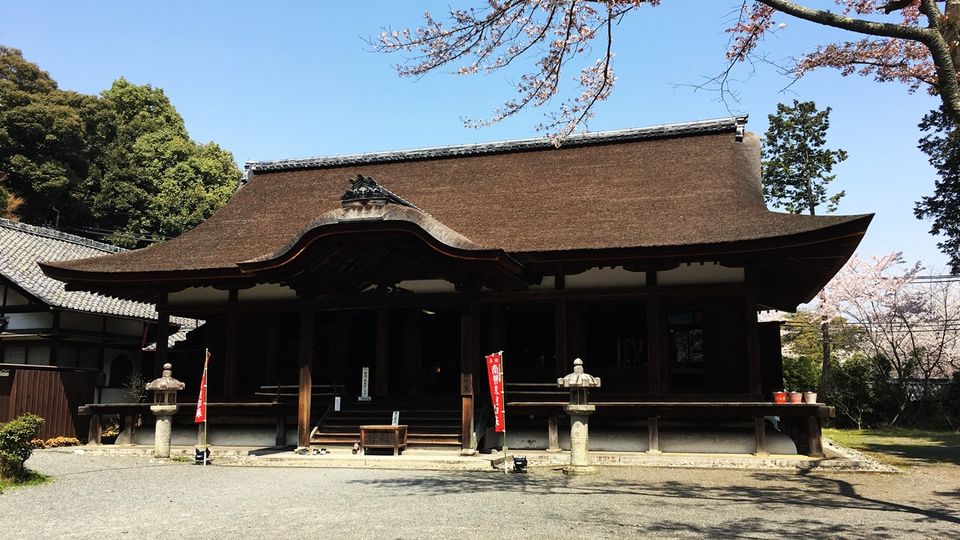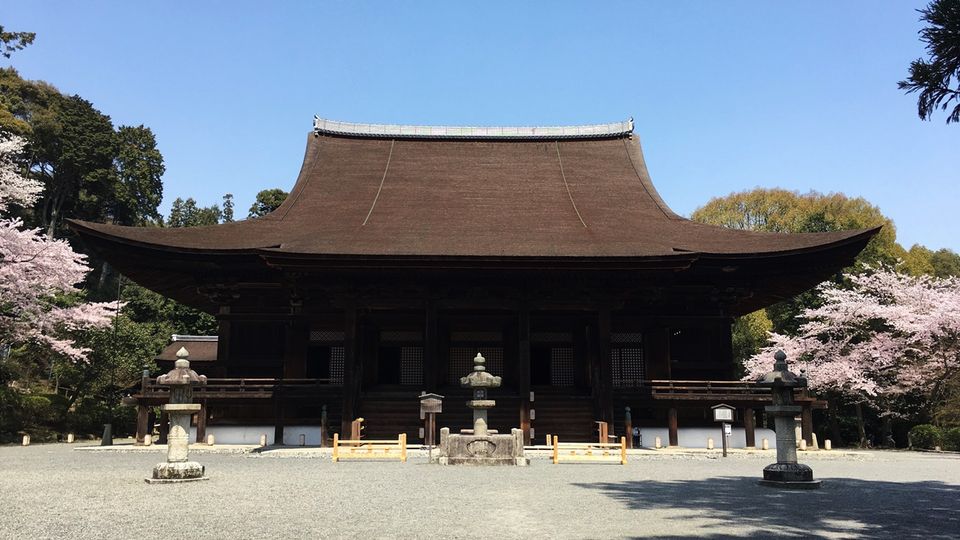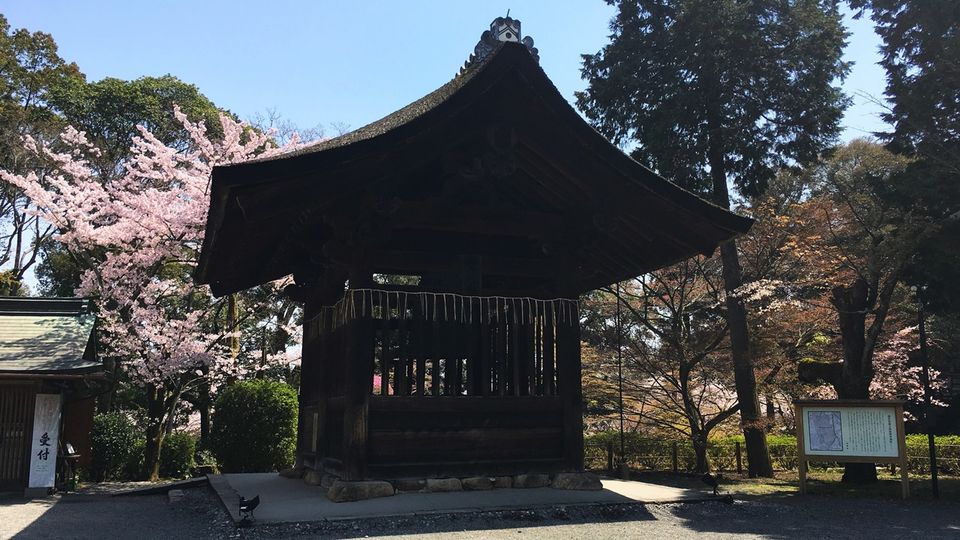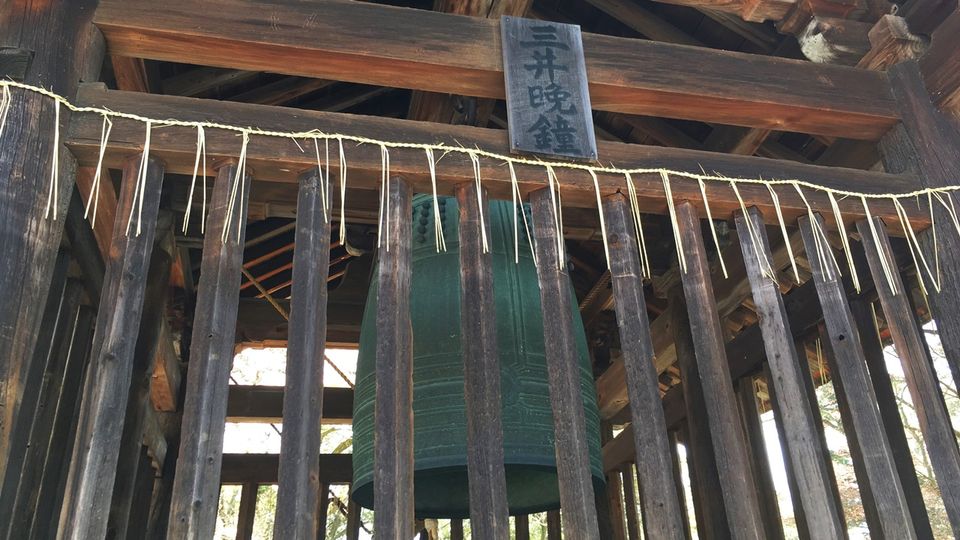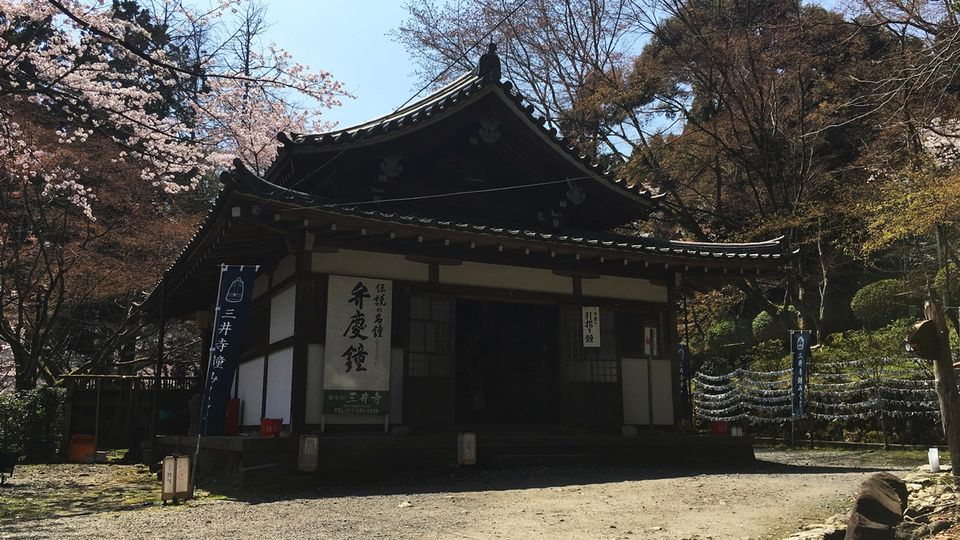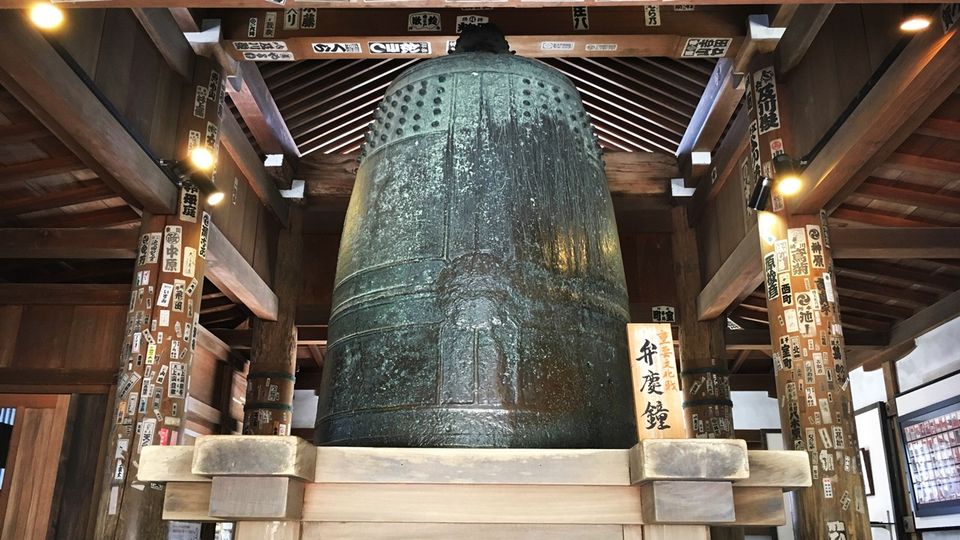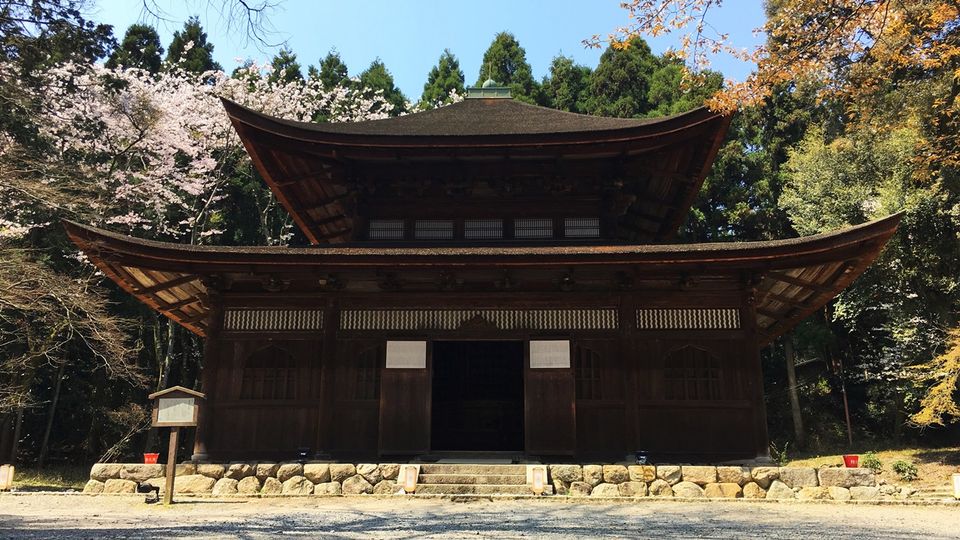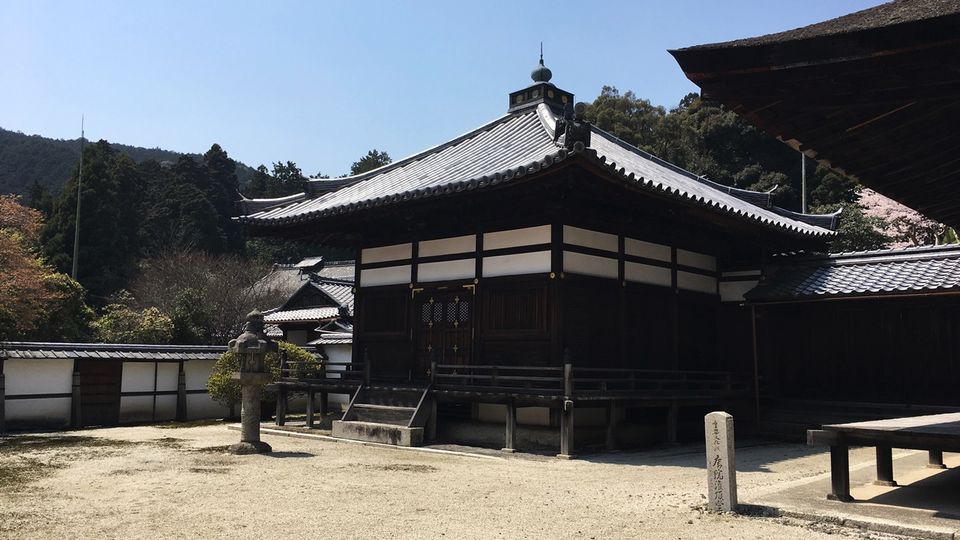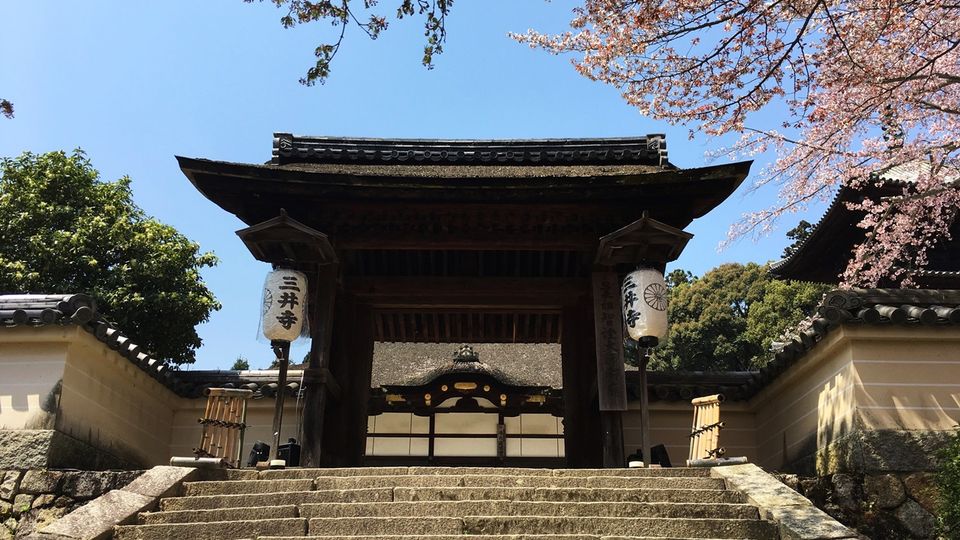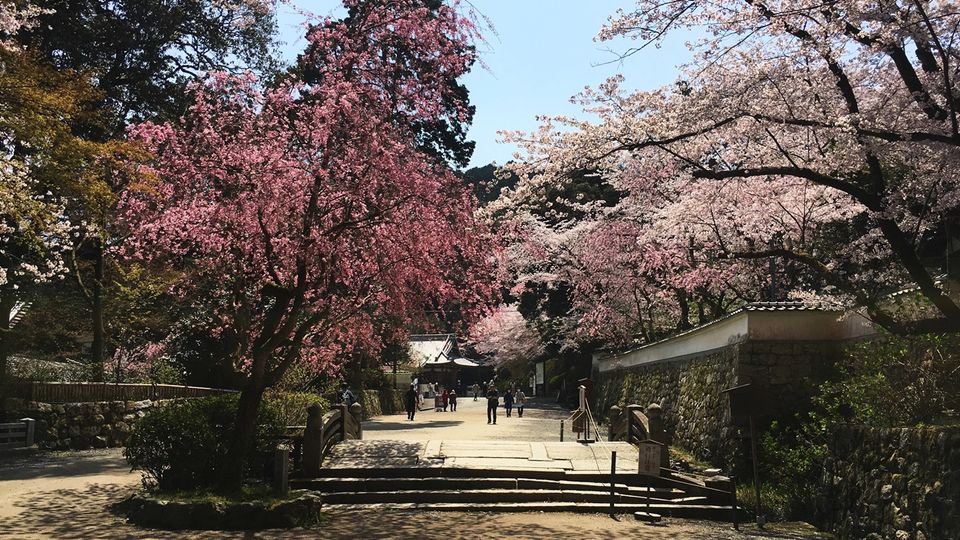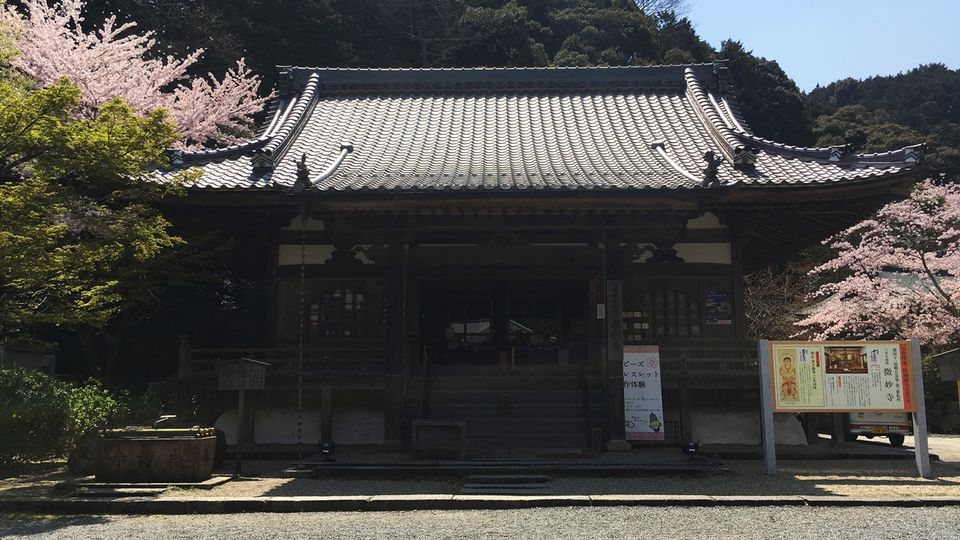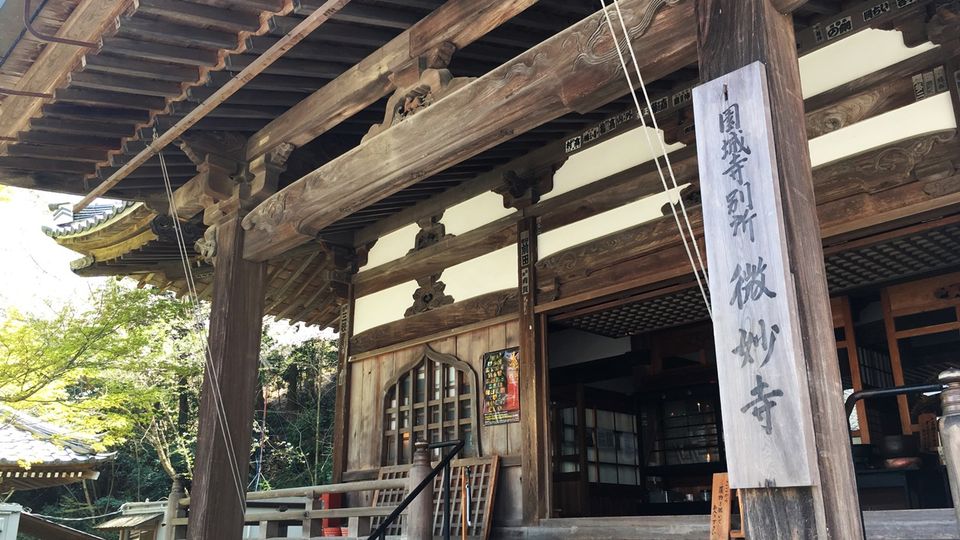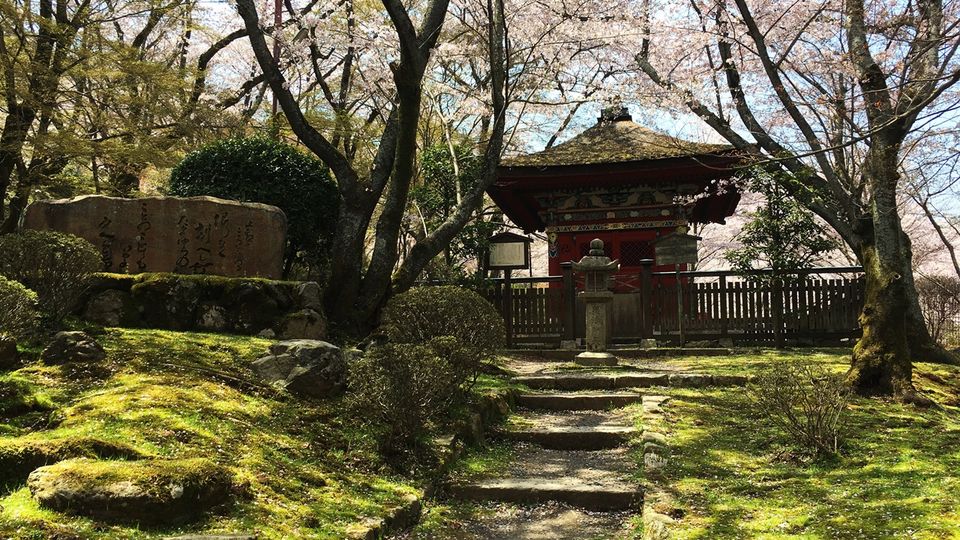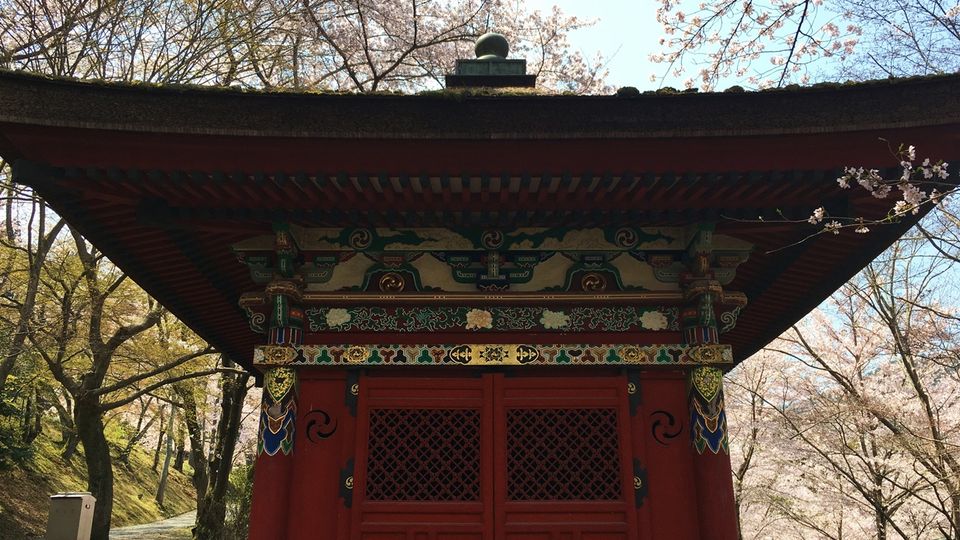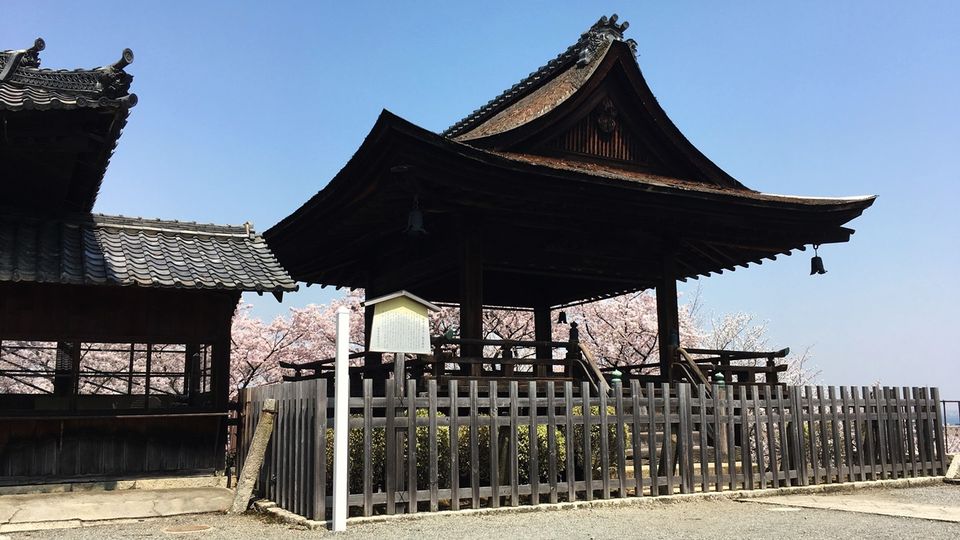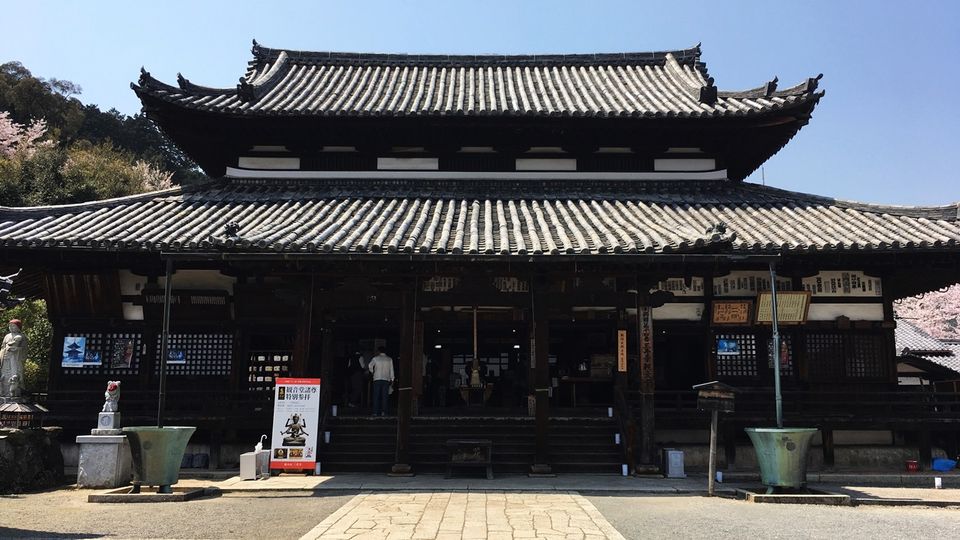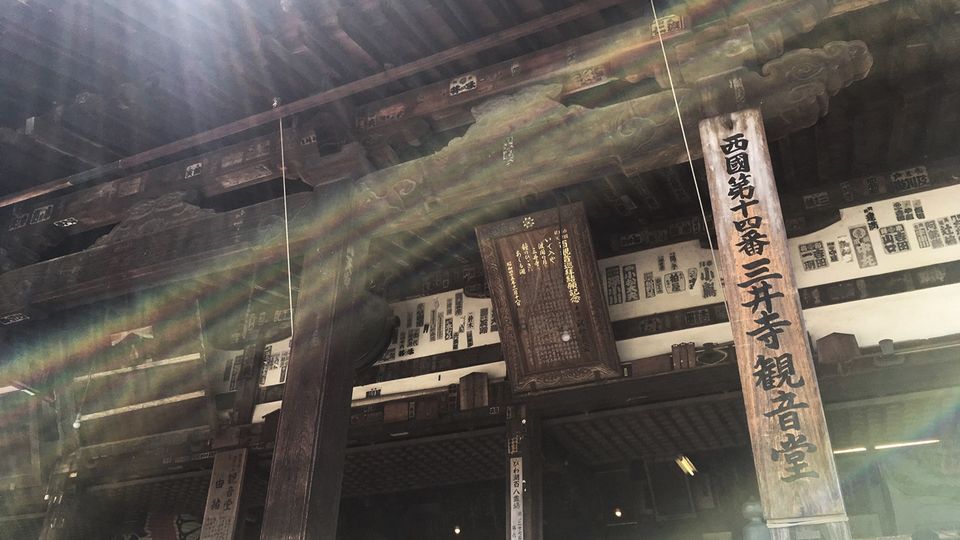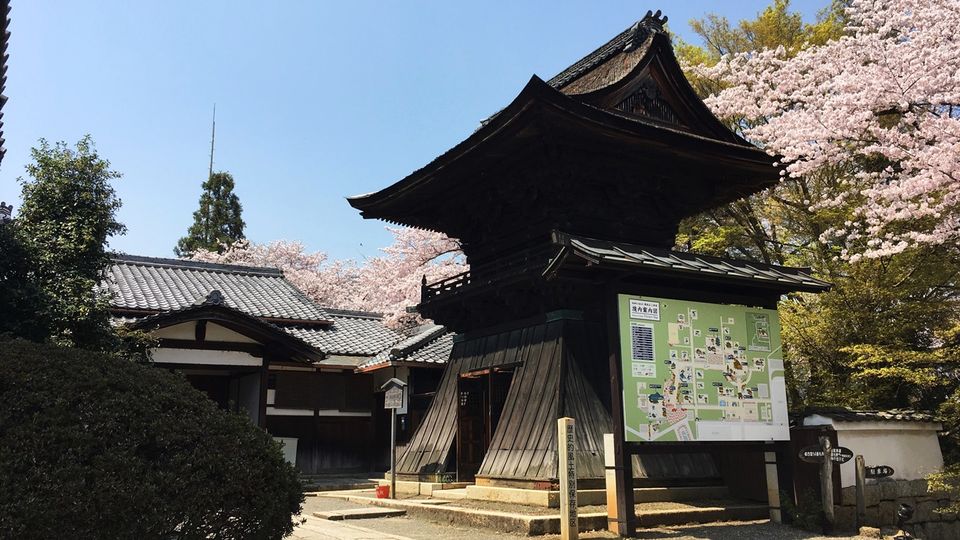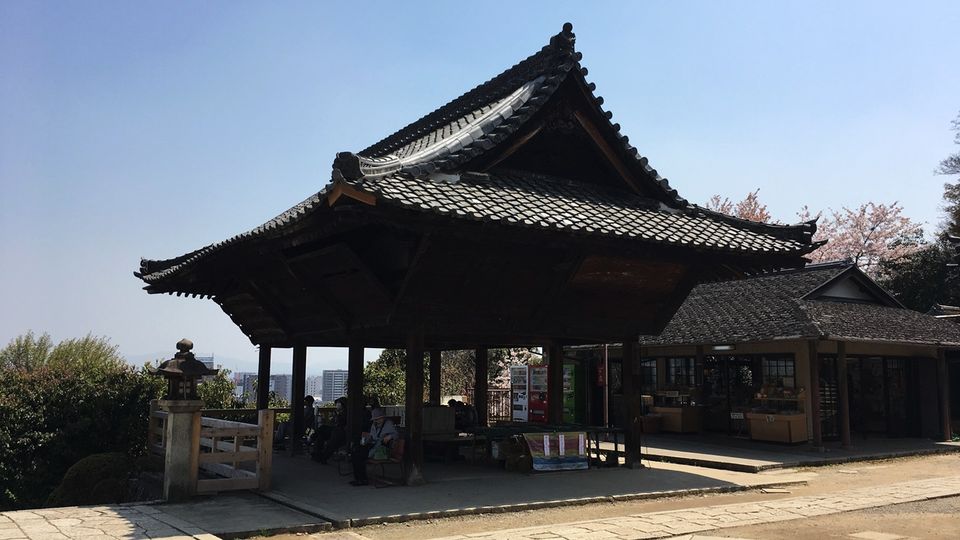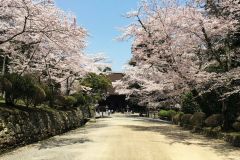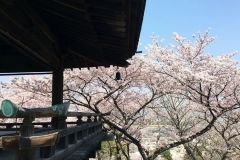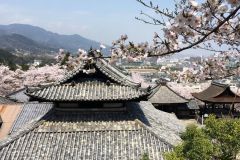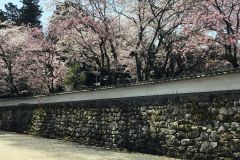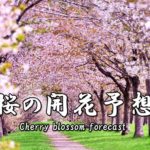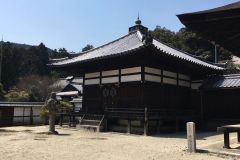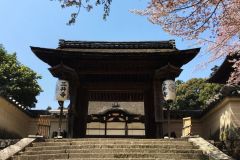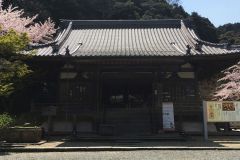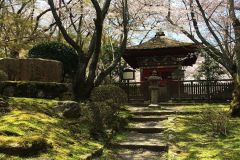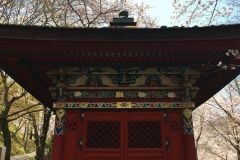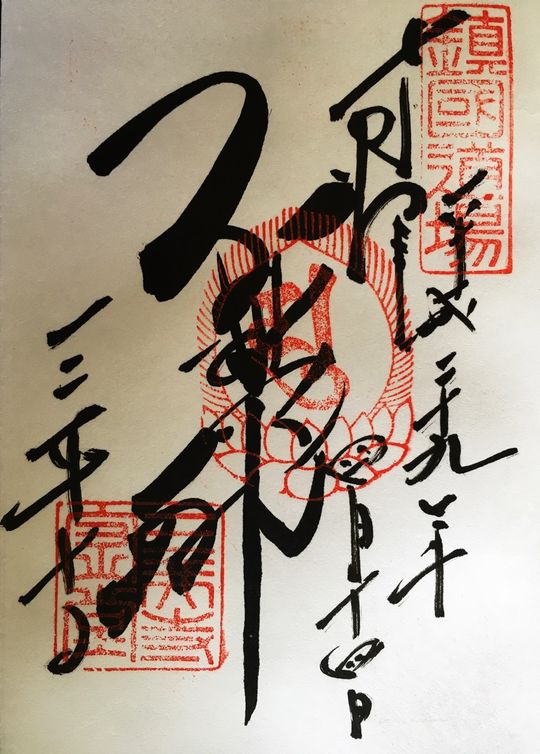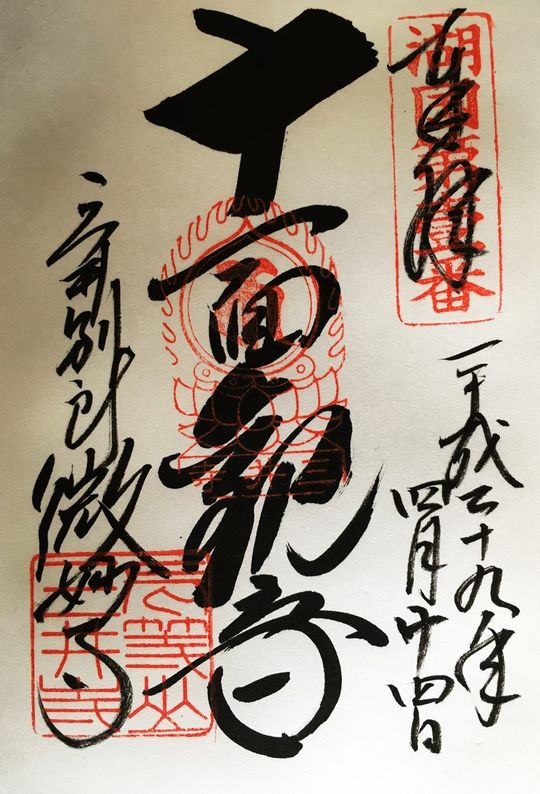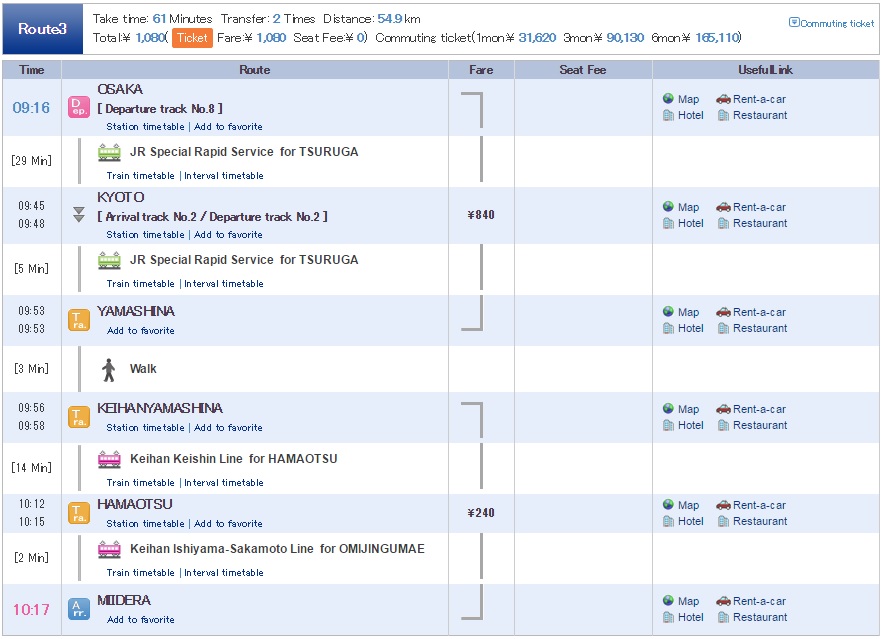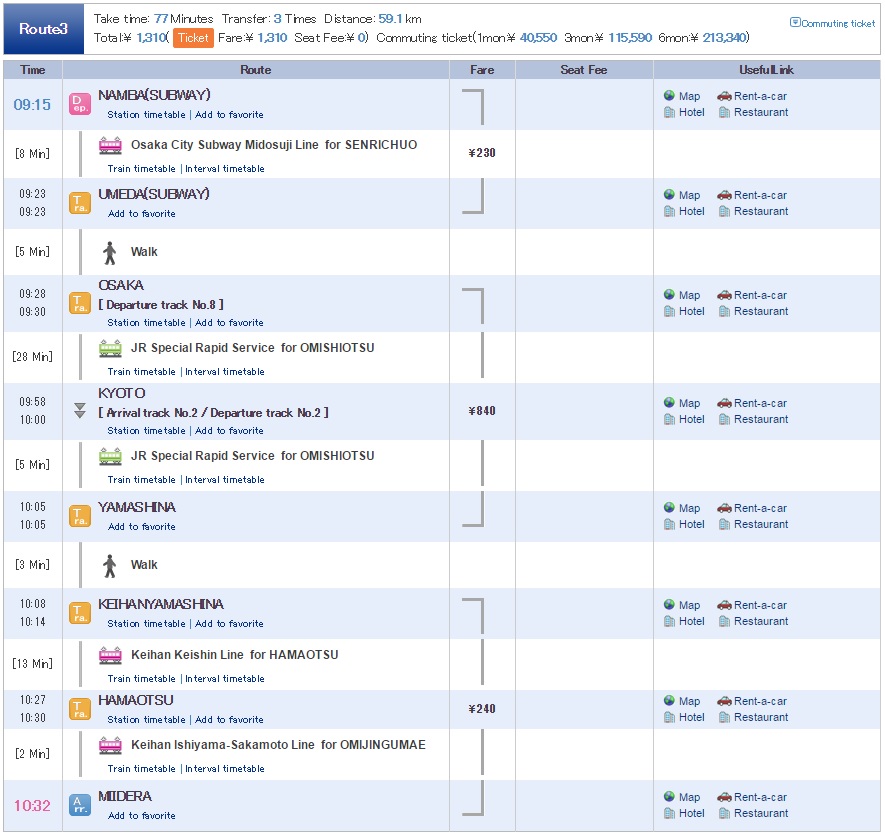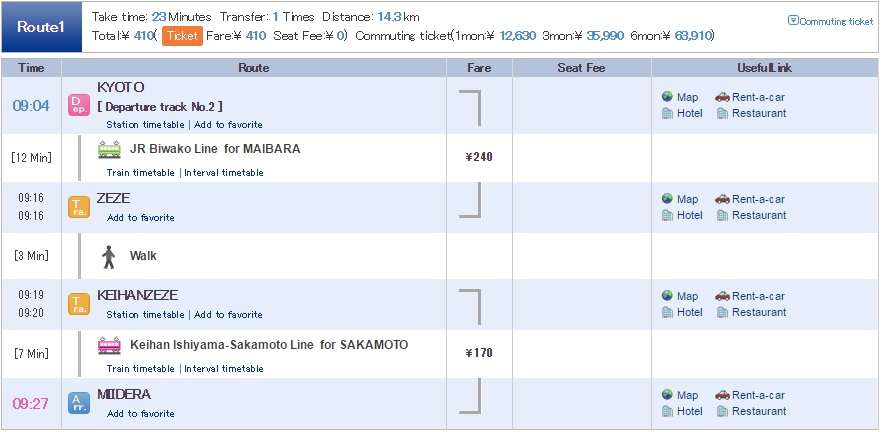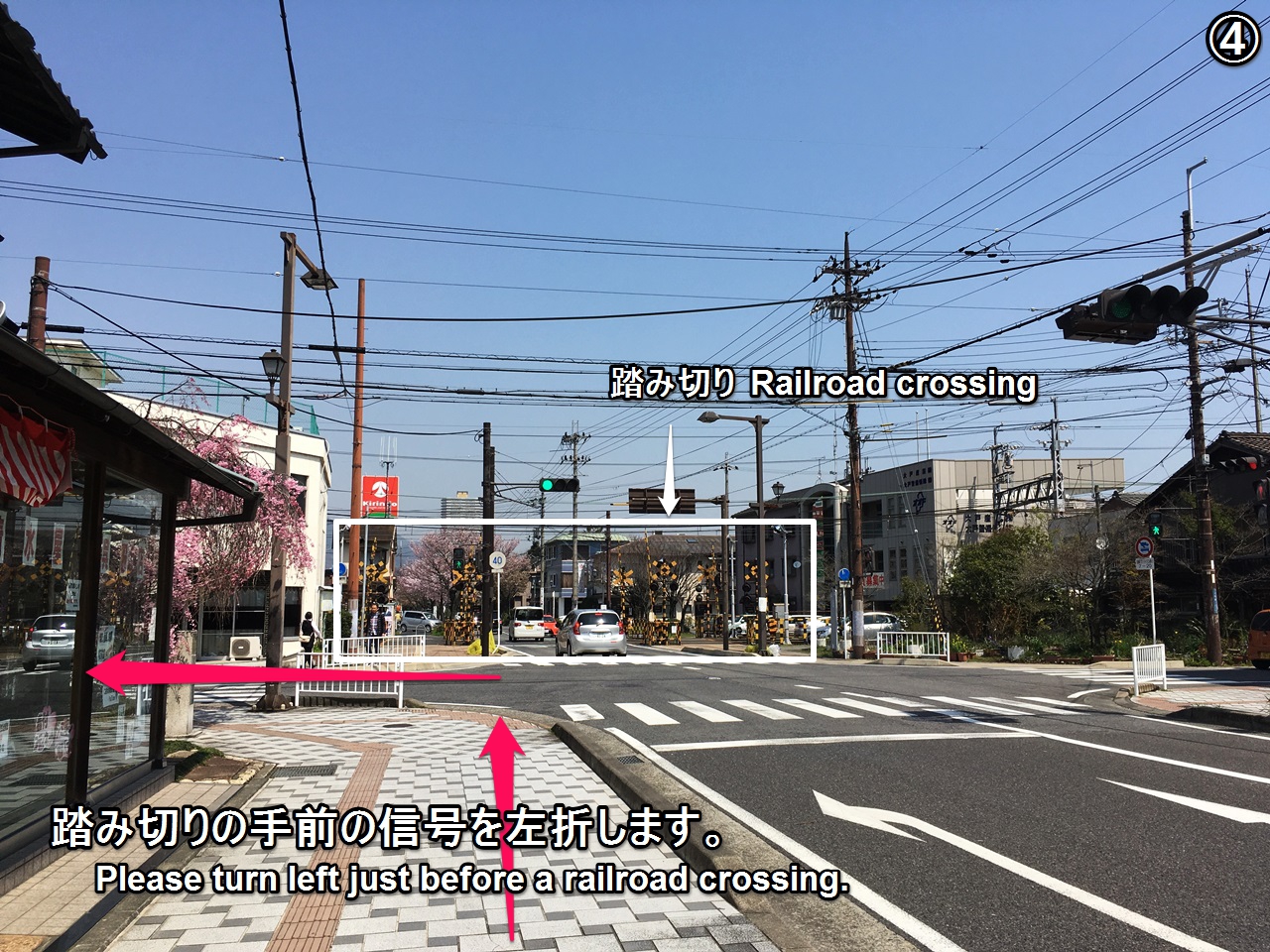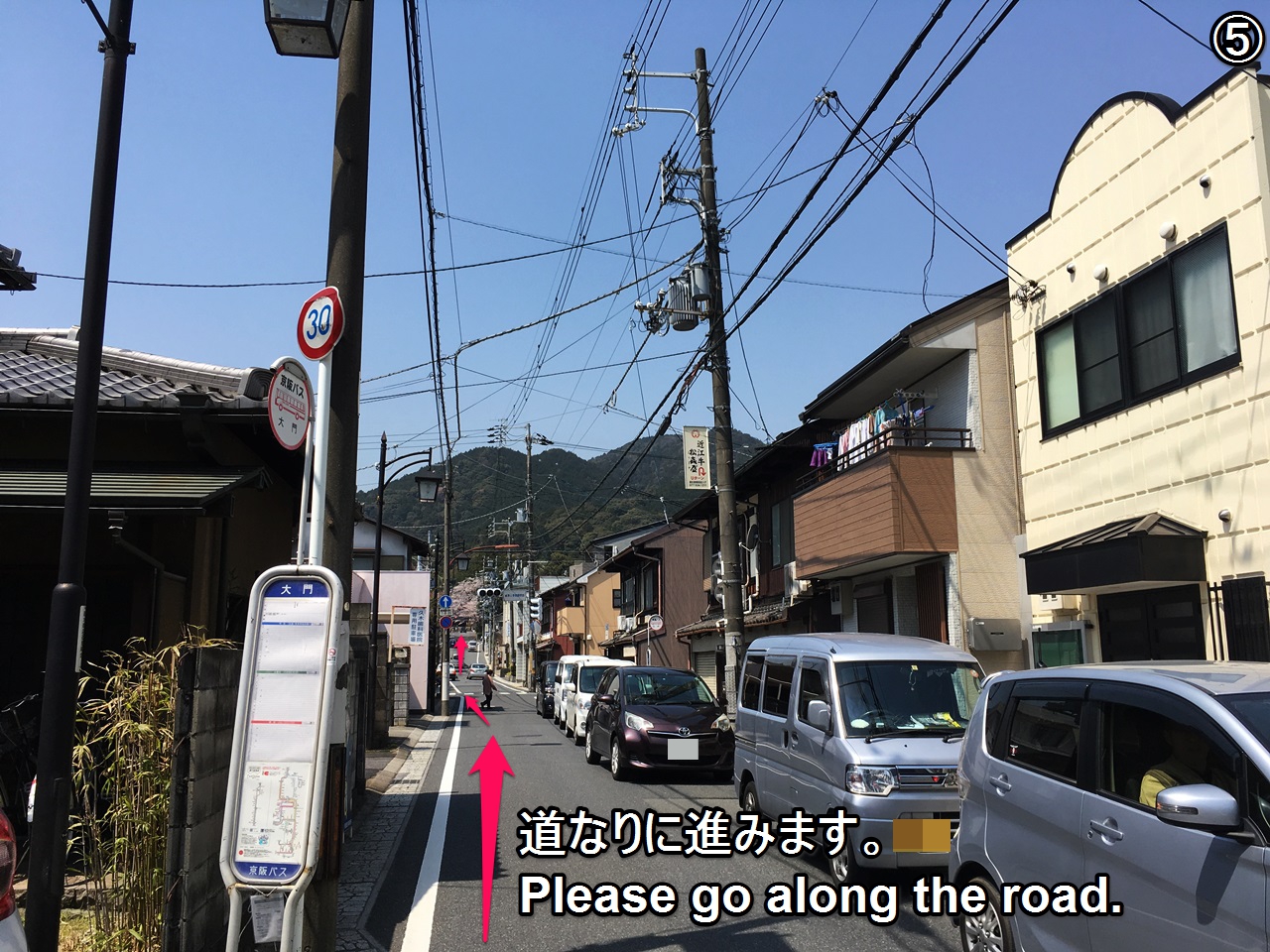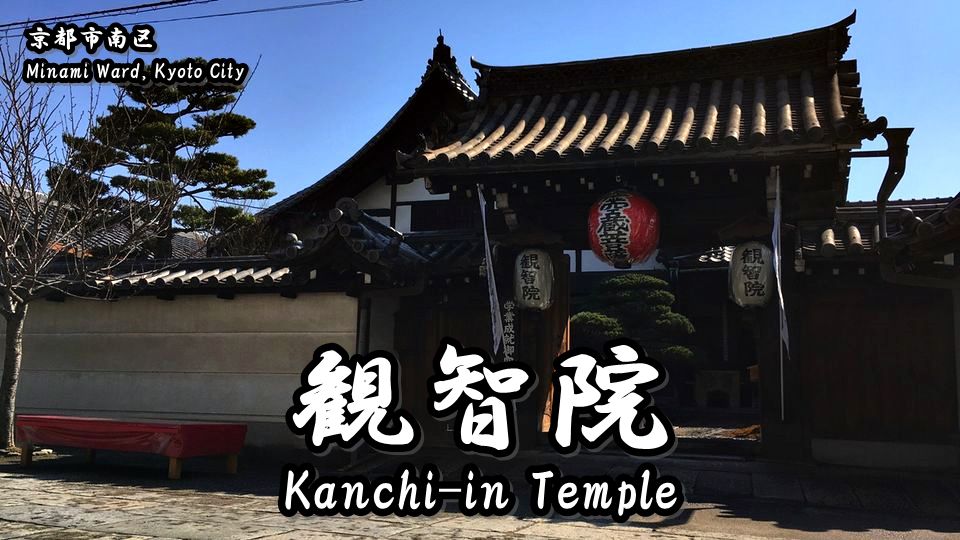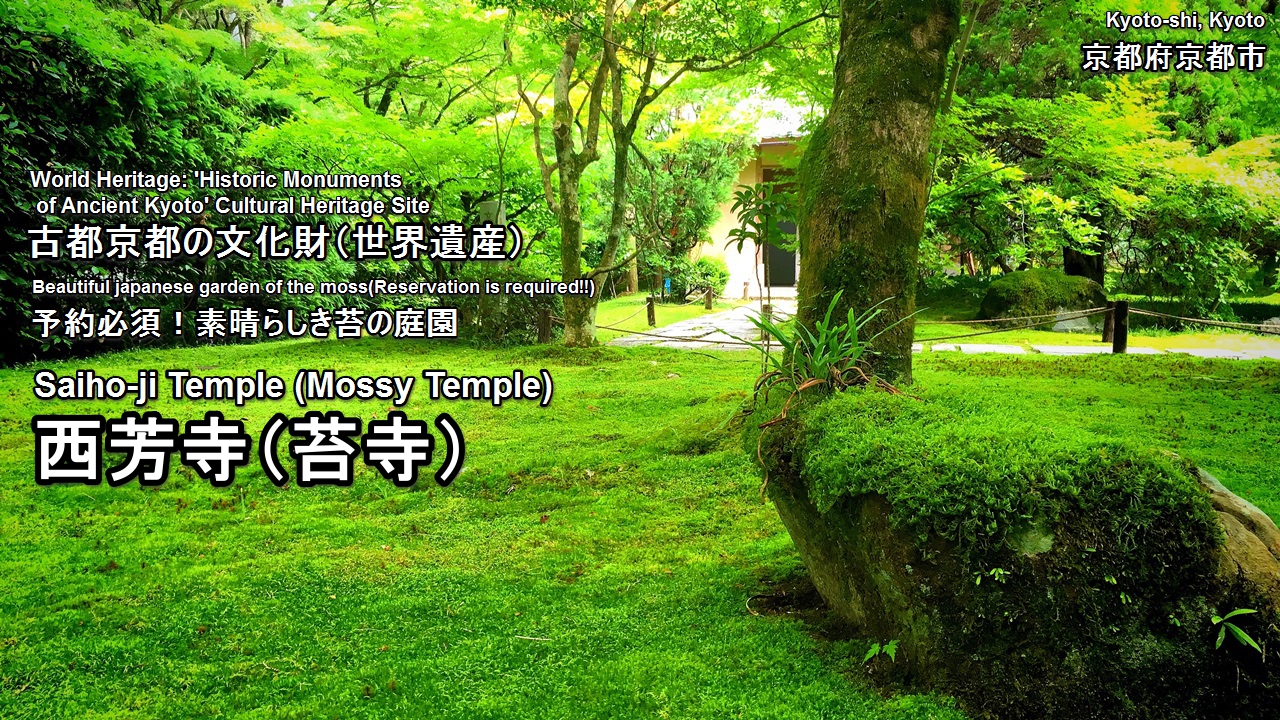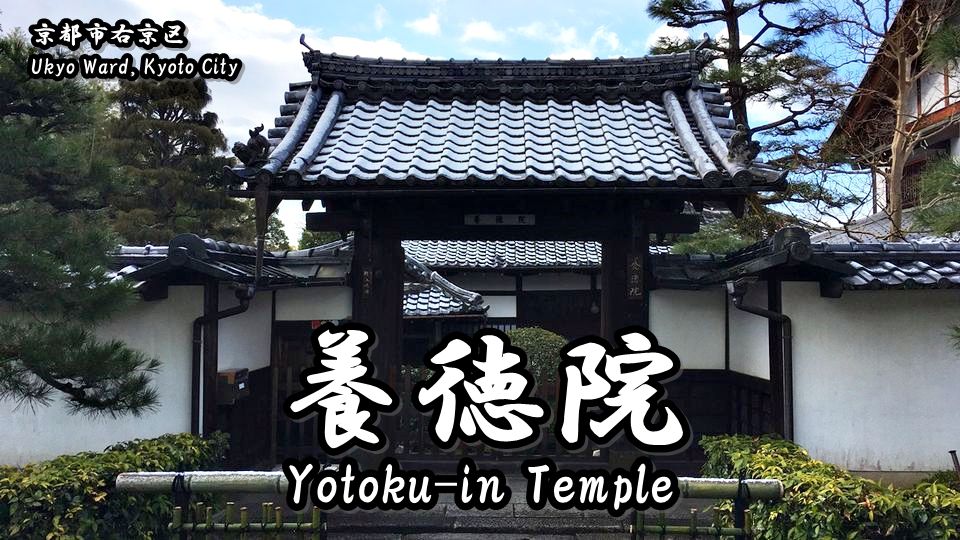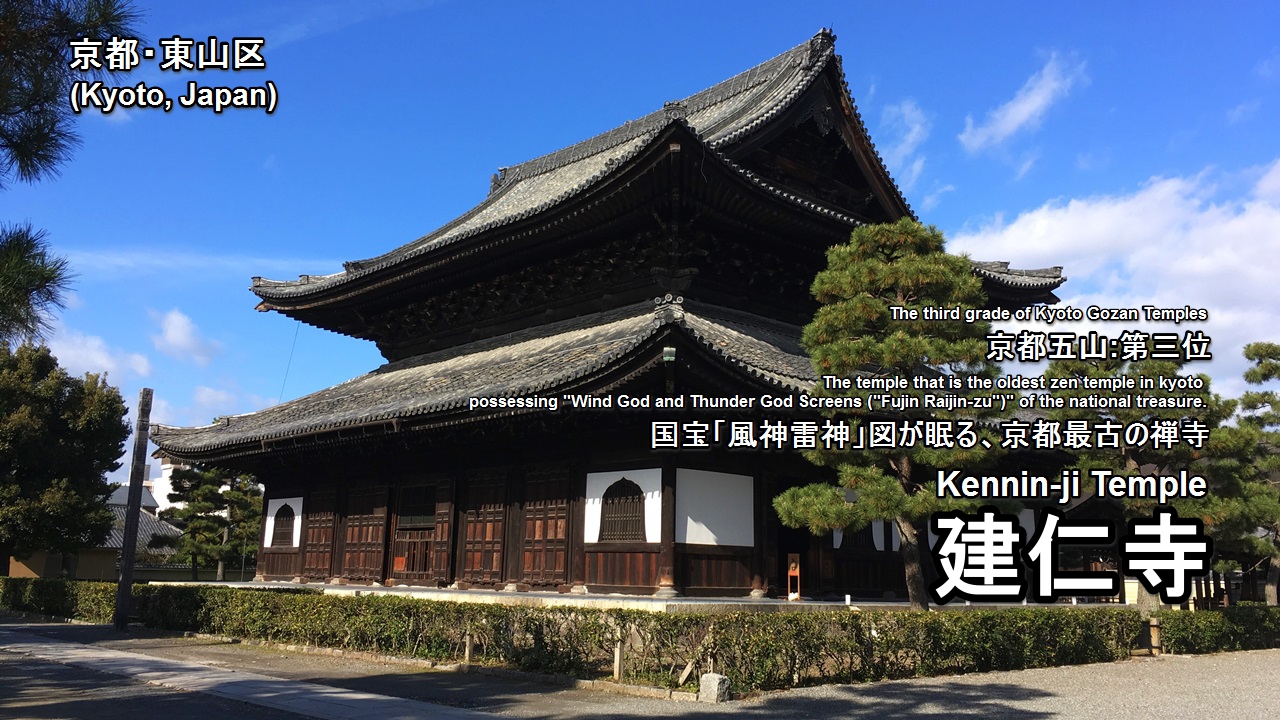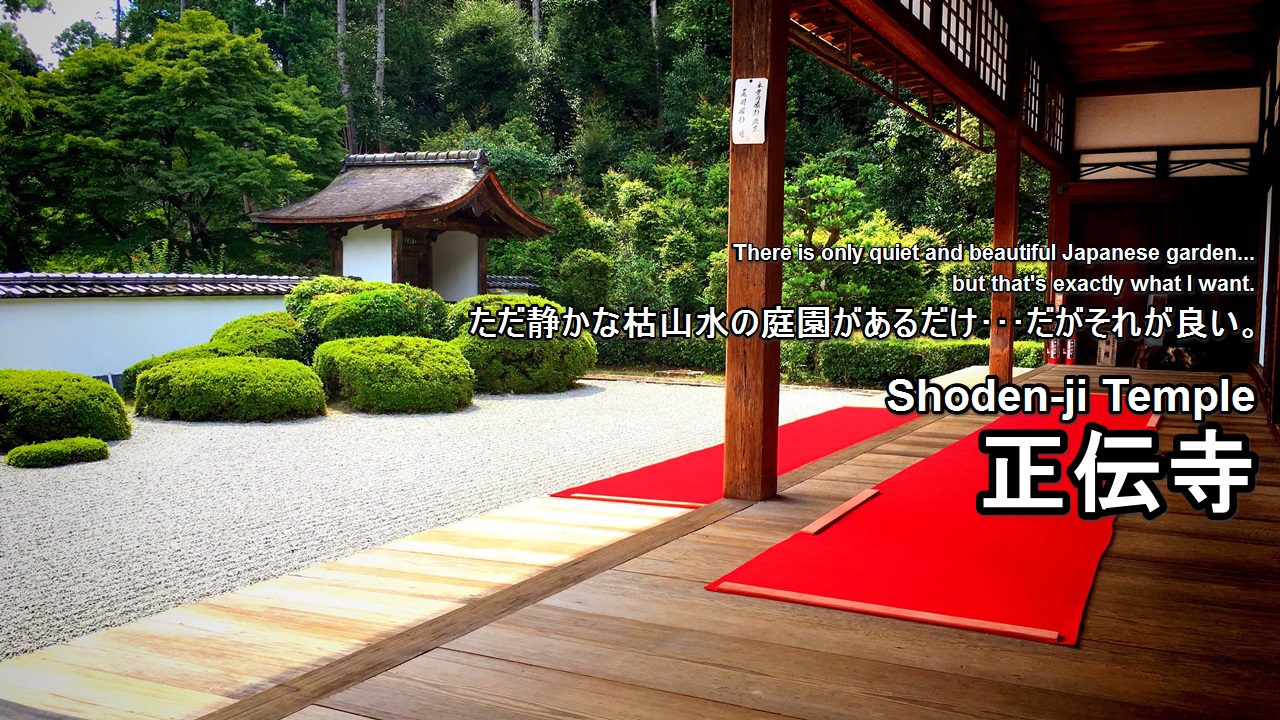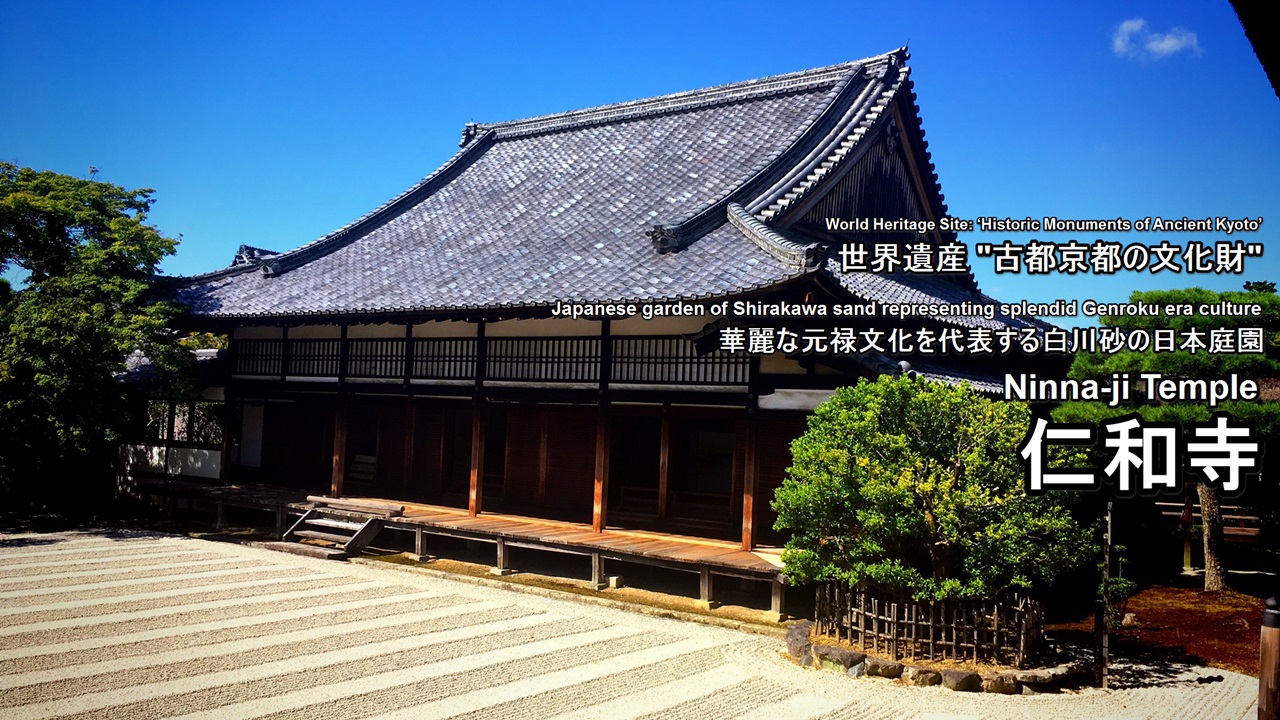Mii-dera (Onjo-ji) Temple is a head temple of the Tendaijimon Buddhist sect in Otsu City, Shiga Prefecture.
Highlight of this temple is cherry blossoms in spring and the superb view of Lake Biwa.
It is known as one of the most famous cherry blossom viewing spots of Kansai resion because more than 1,000 cherry trees are planted in this temple.
In addition, we can overlook Lake Biwa from the precincts of the temple because it is located on the hill of Lake Biwa.
History of Mii-dera
Let’s study the history of this temple with me before introducing of Mii-dera.
I think that we can enjoy the sightseeing of this temple more by learning the history of it. XD
It was first established as a Uji-dera Temple (temple built for praying clan’s glory) of Ouchi clan in the 7th century, and restored in the 9th century by Enchin (円珍) who was the sect founder of Tendai Jimonshu.
Principal image of this temple is Miroku Bosatsu (Maitreya:弥勒菩薩).
It is said that the Emperor Tenmu granted this image when Mii-dera was founded.
It is an ‘absolute hibutsu‘, so it is still never unveiled even today and is said that no one has ever seen this image.
In 1595, because Mii-dera was angered Hideyoshi TOYOTOMI, it received kessho (confiscation of jiryo (temple estate), actual abolishment of a temple).
(It is still shrouded in mystery why this temple angered him.)
But, in 1598, just before his death, Hideyoshi approved restoration of this temple.
So, the buildings and the precincts of the current Mii-dera were almost completely prepared in those days.
Because Mii-dera Temple has been survived these historical crises and restored every time, it is called ‘Phoenix temple.’
Information for visitors
Information
Address:246, Onjojicho, Otsu-shi, Shiga, 520-0036, Japan
Phone Number:+81-77-522-2238
Foundation:In the seventh century
Founder:Otomo-no-Yota-no-Okimi(大友与多王)
Sect:Tendaijimon Buddhist sect
Principal image:Miroku Bosatsu (Maitreya:弥勒菩薩)
Open
| Precincts | 8:00~17:00 |
| Treasure hall | 8:30~16:30 |
Admission fee
| Adults | 600 yen |
| High / Junior high students | 300 yen |
| Elementary students | 200 yen |
Other information
・Please ask temple’s staff where you can take photos and videos.
・Reservation is necessary if we want to visit Kojo-in (National treasure) and Kangaku-in (National treasure).
・Worship method of a shinto shrine and a buddhist temple, please refer to the following article.
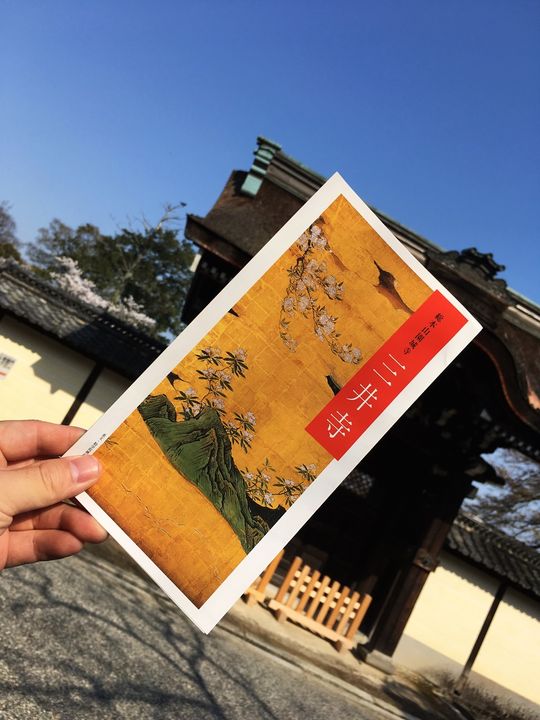
Next, let’s see highlights of this temple!
Highlights of Mii-dera
- 仁王門 (重要文化財):Nio-mon gate (Important cultural property)
- 釈迦堂 (重要文化財)*:Shaka-do hall (Important cultural property)*
- 金堂 (国宝)*:Kon-do hall (National treasure)*
- 光浄院 (国宝)*:Kojo-in (National treasure)*
- 勧学院 (国宝)*:Kangaku-in (National treasure)*
- 三井の晩鐘 (重要文化財)*:Evening Bell of Mii (Important cultural property)*
- 閼伽井屋 (重要文化財)*:Akai-ya (Important cultural property)*
- 霊鐘堂 (重要文化財)*:Reisho-do hall (Important cultural property)*
- 一切経蔵 (重要文化財)*:Issai-Kyozo (Important cultural property)*
- 唐院 (重要文化財)*:To-in (Important cultural property)*
- 唐院 三重塔 (重要文化財)*:Three-Storied Pagoda of To-in (Important cultural property)*
- 唐院 潅頂堂 (重要文化財)*:Kanjo-do hall of To-in (Important cultural property)*
- 唐院 大師堂 (重要文化財)*:Daishi-do hall of To-in (Important cultural property)*
- 唐院 長日護摩堂*:Goma-do hall of To-in*
- 唐院 四脚門 (重要文化財)*:Shikyaku-mon gate of To-in (Important cultural property)*
- 村雲橋*:Murakumo-bashi bridge*
- 微妙寺*:Bimyo-ji Temple*
- 毘沙門堂 (重要文化財)*:Bishamon-do hall (Important cultural property)*
- 観月舞台*:Kangetsu (moon-viewing) stage*
- 観音堂*:Kannon-do hall*
- 鐘楼*:Shoro (Bell tower)*
- 絵馬堂*:Ema-do hall*
This mark ‘*‘ is a pay area.
仁王門 (重要文化財):Nio-mon gate (Important cultural property)
Nio-mon gate was built in 1452 of the Muromachi period.
This gate was reconstructed by donation of Ieyasu Tokugawa and was designated as an important cultural property.
釈迦堂 (重要文化財)*:Shaka-do hall (Important cultural property)*
Shaka-do hall was built in the early Muromachi period.
Principal image is Shaka Nyorai (釈迦如来).
金堂 (国宝)*:Kon-do hall (National treasure)*
Kon-do hall was built in 1599 of the Momoyama period.
It was donated by Kita no Mandokoro (legal wife of Hideyoshi TOYOTOMI) and designated as a national treasure.
光浄院 (国宝)*:Kojo-in (National treasure)*

Kojo-in was built in 1601 of the Momoyama period and designated as a national treasure.
This building has the highest formality in the sub-temples of Mii-dera.
It is not ordinarily open to the public. (Reservation is necessary if we want to visit.)
勧学院 (国宝)*:Kangaku-in (National treasure)*

Kangaku-in was built in 1600 of the Momoyama period and designated as a national treasure.
This building has the role as a place for studying Buddhist doctrines.
It is not ordinarily open to the public. (Reservation is necessary if we want to visit.)
三井の晩鐘 (重要文化財)*:Evening Bell of Mii (Important cultural property)*
The temple bell of Mii-dera has the popular name called ‘Evening Bell of Mii (三井の晩鐘)‘ and designated as an important cultural property.
It is one of the three most famous temple bells in Japan, along with the ones of Byodo-in Temple and Jingo-ji Temple.
閼伽井屋 (重要文化財)*:Akai-ya (Important cultural property)*
Akai-ya was built in 1600 of the Momoyama period and designated as an important cultural property.
Sacred spring water which was used for ubuyu (a baby’s first bath) for three generations of emperors (Emperor Tenchi, Emperor Tenmu and Empress Jito) is gushing out in this place.
霊鐘堂 (重要文化財)*:Reisho-do hall (Important cultural property)*
This is Reisho-do hall.
The temple bell in this building was made in the Nara period.
It is also called ‘The bell dragged by Benkei (弁慶の引き摺り鐘)‘ and designated as an important cultural property.
一切経蔵 (重要文化財)*:Issai-Kyozo (Important cultural property)*
Issai-Kyozo was rebuilt in 1602 of the Momoyama period.
Issai-Kyozo means ‘Complete Collection of Scriptures’.
Rinzo (a warehouse to store Buddhist scriptures) is put in this building, and designated as an important cultural property.
唐院 (重要文化財)*:To-in (Important cultural property)*
To-in has a role as the grave of Enchin (円珍) who is the restorer of this temple, and the sacred book which was brought by him from the Tang Dynasty of China is kept in the building.
唐院 三重塔 (重要文化財)*:Three-Storied Pagoda of To-in (Important cultural property)*
Three-Storied Pagoda of To-in was built in 1601 of the Momoyama period.
It was donated by Ieyasu TOKUGAWA and designated as an important cultural property.
唐院 潅頂堂 (重要文化財)*:Kanjo-do hall of To-in (Important cultural property)*
唐院 大師堂 (重要文化財)*:Daishi-do hall of To-in (Important cultural property)*
Kanjo-do hall was built in 1629 of the Edo period.
Daishi-do hall which was built in 1598 of the Momoyama period.
Kanjo-do hall has the role as a Dojo studio of ascetic practices and Daishi-do hall has the role as a grave of Enchin (円珍).
Both buildings are designated as an important cultural property.
唐院 長日護摩堂*:Goma-do hall of To-in*
Goma-do hall was built in the Edo period.
It has the role as a dojo studio which a Goma (Holy Fire) will be held.
唐院 四脚門 (重要文化財)*:Shikyaku-mon gate of To-in (Important cultural property)*
Shikyaku-mon gate was built in 1598 of the Momoyama period, and designated as an important cultural property.
村雲橋*:Murakumo-bashi bridge*
This is the bridge called Murakumo-bashi bridge.
When Enchin (円珍) prayed for rain on this bridge in those days, it is said that a rain cloud is developed from this bridge.
微妙寺*:Bimyo-ji Temple*
Bimyo-ji Temple is one of the sub-temples of Mii-dera.
Principal image is eleven-faced Kannon and is the first site on the Kokoku Kannon Pilgrimage of 11 Temples.
毘沙門堂 (重要文化財)*:Bishamon-do hall (Important cultural property)*
Bishamon-do hall was built in 1616 of the Edo period.
This is a richly colored temple building where Bishamonten (Vaisravana:毘沙門天) is enshrined, and designated as an important cultural property.
観月舞台*:Kangetsu (moon-viewing) stage*
Kangetsu (moon-viewing) stage was built in 1849 of the Edo period.
It is known as a famous place of the moon-viewing from old days.
観音堂*:Kannon-do hall*
Kannon-do hall was built in 1689 of the Edo period.
Principal image is Nyoirin Kannon (the Bodhisattva of Compassion) and is the 14th site on the 33 Kannon temples in western Japan.
鐘楼*:Shoro (Bell tower)*
Shoro (Bell tower) was built in 1814 of the Edo period.
Temple bell of this building called Korean bell.
絵馬堂*:Ema-do hall*
Ema-do hall are dedicated ema (votive tablets).
This building has the role as a rest station and has a very good view.
Cherry Blossoms of Mii-dera
[Information of the cherry blossom forecasts]
Photo of Mii-dera
Video of Mii-dera
Goshuin (red ink stamp) of Mii-dera
This temple has six kinds of goshuin.
I got two kinds of goshuin this time.
It is “Miroku Bosatsu (Maitreya:弥勒佛)” which is the principal image of this temple.
We can get this goshuin in the Kon-do hall. (300 yen)
It is “Eleven-faced Kannon (十一面観音)” which is the principal image of Bimyo-ji.
We can get this goshuin in the Bimyo-ji. (300 yen)
How to get to Mii-dera
Nearest station is Keihan Ishiyama-Sakamoto-Line Miidera station.
We can also go by bus from JR Otsu Station.
From Osaka Sta. (by train)
Timetable and Route Search (train)
1.Get on the JR Kyoto/Biwako Line from Osaka Station to Yamashina Station and change to the Keihan Keishin Line.
2.Get on the Keihan Keishin Line from Keihan Yamashina Station to Hamaotsu Station and change to the Keihan Ishiyama-Sakamoto Line.
2.Get on the Keihan Ishiyama-Sakamoto Line from Hamaotsu Station to Miidera Station.
From Namba Sta. (by train)
Timetable and Route Search (train)
1.Get on the Osaka Metro Midosuji Line from Namba Station to Umeda Station and change to the JR Kyoto/Biwako Line.
2.Get on the JR Kyoto/Biwako Line from Osaka Station to Yamashina Station and change to the Keihan Keishin Line.
3.Get on the Keihan Keishin Line from Keihan Yamashina Station to Hamaotsu Station and change to the Keihan Ishiyama-Sakamoto Line.
4.Get on the Keihan Ishiyama-Sakamoto Line from Hamaotsu Station to Miidera Station.
From Kyoto Sta. (by train)
Timetable and Route Search (train)
1.Get on the JR Biwako Line from Kyoto Station to Zeze Station and change to the Keihan Ishiyama-Sakamoto Line.
2.Get on the Keihan Ishiyama-Sakamoto Line from Zeze Station to Miidera Station.
From Miidera station (on foot)
It’s about 10 minutes (600m) on foot.
Get on a bus from JR Otsu Station
Timetable and Route Search (bus)
Please get on a Keihan Bus No.26, 66, 66A (Otsu Sta. [3]) and get off Miidera (Mii-dera Temple).
Bus company:Keihan Bus
Routes/Destination:
・Route No.26 [Bound for Otsukyo Sta.]
・Route No. 66,66A [Bound for Hieidaira]
Boarding bus stop:Otsu Sta. [3]
Alighting bus stop:Miidera (Mii-dera Temple)
Bus fare:210 yen
Time required:About 10 min
Take a taxi
From Kyoto Station:about 5,500 yen (25 minutes)
From Gion-Shijo Station:about 5,000 yen (20 minutes)
From JR Ishiyama Station:about 1,000 yen (10 minutes)
・Let’s show a taxi driver the following phrase.
・If you want to call a taxi, let’s show the following phrase.
Phone number of taxi dispatch (Kyoto Station)
Phone number of taxi dispatch (Otsu Station)
Hotel search & reservation around Mii-dera
How did you like it?
Have a nice trip!

